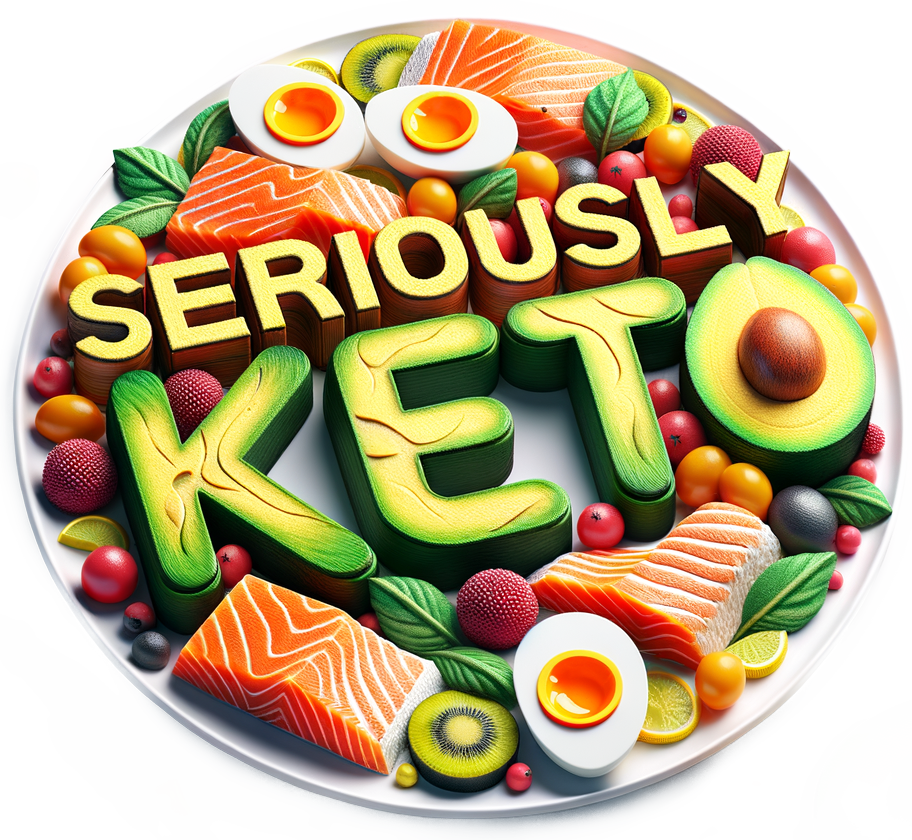Are you curious to know which types of fats are permissible on the popular keto diet? Well, you’ve come to the right place! The keto diet, which is known for its low-carb and high-fat approach, allows for a variety of fats to be consumed. In this article, we will explore the different types of fats that you can enjoy while following the keto diet, giving you a better understanding of what’s allowed and how you can incorporate them into your meals. So, let’s dive in and discover the fats that can help you on your keto journey!
Understanding the Keto Diet
The Keto Diet, short for ketogenic diet, is a low-carb, high-fat diet that has gained popularity in recent years for its potential benefits in weight loss and overall health. The diet works by inducing a state of ketosis in the body, where it relies primarily on fat for fuel instead of carbohydrates. This shift in energy source can lead to various health benefits, such as improved insulin sensitivity, increased weight loss, and enhanced mental clarity.
Definition of Keto Diet
The Keto Diet is characterized by a drastic reduction in carbohydrate intake and an increase in dietary fat consumption. Typically, the diet restricts carbohydrate consumption to below 50 grams per day, forcing the body to enter a state of ketosis. In this metabolic state, the body produces ketones from fat, which become the primary source of energy instead of glucose.

The Principles of the Keto Diet
The principles of the Keto Diet revolve around shifting the body’s metabolism from using glucose for energy to using fats and ketones. By severely limiting carbohydrate intake, the body is forced to burn stored fats for energy. This process leads to weight loss and can also help regulate blood sugar levels, reduce inflammation, and improve overall metabolic health.
Why Fats are Important in the Keto Diet
Fats play a crucial role in the Keto Diet as they become the primary source of fuel for the body. Unlike carbohydrates, which are easily converted to glucose, fats require more effort to break down and utilize. Consuming adequate amounts of healthy fats ensures that the body has a steady supply of energy and promotes satiety, reducing cravings and hunger pangs. Additionally, fats are essential for the absorption of fat-soluble vitamins and the maintenance of cellular health.

Monounsaturated Fats
Definition of Monounsaturated Fats
Monounsaturated fats are a type of dietary fat that are liquid at room temperature but can solidify when chilled. Chemically, they have one double bond in their fatty acid chain, which gives them distinct properties. These fats are considered heart-healthy and are associated with various health benefits.
Examples of Foods Rich in Monounsaturated Fats
Some excellent sources of monounsaturated fats include olive oil, avocados, nuts (such as almonds, cashews, and peanuts), and seeds (such as pumpkin and sesame seeds). These foods can be incorporated into the Keto Diet to increase monounsaturated fat intake.
Benefits of Monounsaturated Fats in the Keto Diet
Monounsaturated fats provide numerous benefits when included in the Keto Diet. They are known to promote heart health by reducing LDL cholesterol levels and increasing HDL cholesterol levels. They also have anti-inflammatory properties, which can help lower the risk of chronic diseases, such as heart disease and diabetes. Additionally, monounsaturated fats promote satiety and contribute to weight loss by providing a source of healthy fats that keep you feeling full for longer periods.
Polyunsaturated Fats
Definition of Polyunsaturated Fats
Polyunsaturated fats, like monounsaturated fats, are a type of dietary fat that remain liquid at room temperature. They have multiple double bonds in their fatty acid chain, which gives them distinct chemical characteristics. These fats are essential for the body and must be obtained through diet as they cannot be produced by the body.
Examples of Foods Rich in Polyunsaturated Fats
Polyunsaturated fats can be found in fatty fish, such as salmon, mackerel, and sardines, as well as in walnuts, flaxseeds, and chia seeds. Including these foods in the Keto Diet can help increase polyunsaturated fat intake.
Benefits of Polyunsaturated Fats in the Keto Diet
Polyunsaturated fats are an excellent source of essential fatty acids, such as omega-3 and omega-6. These fatty acids play a crucial role in brain function, heart health, and overall inflammation regulation. By incorporating polyunsaturated fats into the Keto Diet, you can support a healthy heart, improve cognitive function, and reduce the risk of chronic diseases.

Saturated Fats
Definition of Saturated Fats
Saturated fats are a type of dietary fat that are solid at room temperature. Unlike monounsaturated and polyunsaturated fats, saturated fats do not have any double bonds in their fatty acid chain, making them more stable. They have been the subject of controversy in the past, but recent research suggests that they may not be as harmful as once believed.
Examples of Foods Rich in Saturated Fats
Saturated fats can be found in animal products, such as fatty cuts of meat, butter, ghee, and full-fat dairy products like cheese and cream. They are also present in some plant-based sources, such as coconut oil and palm oil. Including these foods in moderation can provide a source of saturated fats in the Keto Diet.
Benefits of Saturated Fats in the Keto Diet
Contrary to popular belief, saturated fats can have health benefits when consumed in moderation as part of a balanced diet. They provide a concentrated source of energy, contribute to hormone production, and aid in the absorption of fat-soluble vitamins. Saturated fats also contribute to satiety, helping you feel fuller for longer, which can be beneficial for weight management on the Keto Diet.
Omega-3 Fatty Acids
Definition of Omega-3 Fatty Acids
Omega-3 fatty acids are a type of polyunsaturated fats with specific health benefits. They are essential for optimal brain function and support various body functions, including reducing inflammation, supporting heart health, and promoting healthy skin.
Examples of Foods Rich in Omega-3 Fatty Acids
The best sources of omega-3 fatty acids are fatty fish, such as salmon, trout, and sardines. Other sources include flaxseeds, chia seeds, walnuts, and algae-based supplements. These foods can be incorporated into the Keto Diet to ensure an adequate intake of omega-3 fatty acids.
Benefits of Omega-3 Fatty Acids in the Keto Diet
Omega-3 fatty acids play a crucial role in brain health and cognitive function. They have been associated with a reduced risk of heart disease, improved mood and mental health, and decreased inflammation in the body. Including omega-3 fatty acids in the Keto Diet can provide these benefits while maintaining a healthy balance of fats.
Medium-Chain Triglycerides (MCTs)
Definition of Medium-Chain Triglycerides
Medium-Chain Triglycerides (MCTs) are a type of fat that is found in certain oils and dairy products. They are unique because they are easily absorbed and converted into energy by the body, making them an excellent choice for individuals on the Keto Diet.
Examples of Foods Rich in MCTs
Coconut oil is the richest natural source of MCTs. Other sources include palm kernel oil, MCT oil, and dairy products, such as butter and full-fat yogurt. Incorporating these foods into the Keto Diet can increase the intake of MCTs.
Benefits of MCTs in the Keto Diet
MCTs are quickly converted into ketones, which can provide an immediate source of energy for the body, especially during periods of low carbohydrate intake. They have also been shown to increase satiety, boost metabolism, and promote weight loss. Including MCTs in the Keto Diet can enhance the effects of ketosis and support overall weight management.
Fats to Avoid in the Keto Diet
Trans Fats: Definition and Detriments
Trans fats are a type of unsaturated fat that undergoes a process called hydrogenation, which makes them solid and increases their shelf life. These fats are primarily found in processed and fried foods and have been strongly linked to various health issues, including heart disease, inflammation, and insulin resistance. It is crucial to avoid trans fats altogether on the Keto Diet.
Industrial Seed and Vegetable Oils
Industrial seed and vegetable oils, such as soybean oil, corn oil, and canola oil, should be avoided on the Keto Diet. These oils are highly processed and typically contain high levels of omega-6 fatty acids, which can promote inflammation and disrupt the healthy balance of omega-3 and omega-6 fats in the body.
High Omega-6 Polyunsaturated Fats
While polyunsaturated fats are generally considered healthy, it is essential to maintain a balance between omega-3 and omega-6 fatty acids. A diet high in omega-6 fats, which are found in various vegetable oils and processed foods, can promote inflammation and may counteract the benefits of omega-3 fatty acids. It is advised to moderate the intake of high omega-6 polyunsaturated fats on the Keto Diet.
Balancing Fat Intake in the Keto Diet
Understanding the Macronutrient Ratio
The Keto Diet emphasizes maintaining a specific macronutrient ratio to achieve and maintain ketosis. This ratio typically consists of 70-75% of calories from fats, 20-25% from protein, and 5-10% from carbohydrates. Balancing fat intake within this ratio is essential to ensure optimal ketosis and to support overall health on the Keto Diet.
Strategies to Maintain a Healthy Fat Balance
To maintain a healthy fat balance on the Keto Diet, it is crucial to incorporate a variety of fats from different sources. This includes consuming a mix of monounsaturated fats, polyunsaturated fats, saturated fats, and omega-3 fatty acids. It is also important to monitor portion sizes and limit high-fat foods that are also high in unhealthy ingredients, such as added sugars and artificial additives.
Importance of Variety in Fat Sources
Including a wide variety of fat sources in the Keto Diet ensures that you are consuming a range of essential nutrients and fatty acids. Different fats offer distinct health benefits, and by diversifying your fat intake, you can optimize your overall nutritional intake and support various bodily functions. Experimenting with different oils, nuts, seeds, and animal products can help achieve this variety in the Keto Diet.
Potential Health Risks of the Keto Diet
Understanding the ‘Keto Flu’
When transitioning to the Keto Diet, some individuals may experience what is commonly referred to as the ‘Keto Flu.’ This temporary condition occurs as the body adapts to utilizing fats and ketones for fuel instead of carbohydrates. Symptoms can include fatigue, headache, irritability, and nausea. Staying hydrated, consuming adequate electrolytes, and gradually transitioning into the Keto Diet can alleviate these symptoms.
The Long-Term Effects on Heart Health
While the Keto Diet has shown short-term benefits in improving certain heart disease risk factors, the long-term effects on heart health are still under investigation. Some studies suggest that the diet may increase LDL cholesterol levels in some individuals, which could potentially have negative effects on cardiovascular health. Monitoring cholesterol levels and consulting with a healthcare professional is crucial when following the Keto Diet long-term.
Possible Nutrient Deficiencies
Due to the restrictive nature of the Keto Diet, there is a risk of potential nutrient deficiencies if not properly planned and monitored. It is important to ensure an adequate intake of vitamins and minerals, such as potassium, magnesium, and calcium, which can be found in non-starchy vegetables, nuts, and seeds. Regular blood tests and working with a healthcare professional or registered dietitian can help identify and address any potential deficiencies.
Conclusion
Reiterating the importance of fats in the Keto Diet, it is essential to understand that fats are the primary source of energy on this low-carb, high-fat diet. Incorporating a variety of fats, including monounsaturated fats, polyunsaturated fats, saturated fats, omega-3 fatty acids, and medium-chain triglycerides, can provide numerous health benefits and support overall well-being.
Debunking myths about the negative effects of fats on health, recent research suggests that certain fats, when consumed in moderation and as part of a balanced diet, can contribute to heart health, weight management, and cognitive function. However, caution must still be exercised when considering the long-term effects on heart health and potential nutrient deficiencies.
Looking ahead, the future implications of the Keto Diet continue to be researched and explored. As our understanding of nutrition and metabolic processes advances, the role of fats in health and wellness may evolve. Continuing to adopt evidence-based practices, staying mindful of individual needs, and seeking guidance from healthcare professionals can ensure a safe and effective approach to the Keto Diet.

